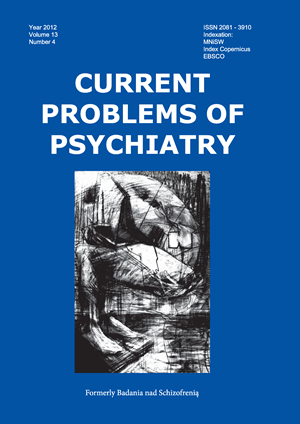Potrzeby emocjonalne a korzystanie z portalu społecznościowego przez młodzież
DOI:
https://doi.org/10.12923/j.2081-3910/13.4/a.07Słowa kluczowe:
portal społecznościowy, potrzeby emocjonalne, młodzieżAbstrakt
Celem pracy było udzielenie odpowiedzi na pytanie: czy i jakie zależności występują między potrzebami emocjonalnymi a aktywnością wykazywaną przez młodzież na portalu Nasza Klasa?
Badaniami objęto grupę 279 uczniów gimnazjów i liceów w wieku 13-18 lat, spośród której wyodrębniono 240 uczniów (169 dziewcząt i 71 chłopców) posiadających profil na portalu społecznościowym Nasza Klasa.
W pracy zastosowano następujące testy: Kwestionariusz socjodemograficzny własnej konstrukcji, Ankietę do badania uzależnienia od Internetu autorstwa Potembskiej oraz Test Przymiotnikowy Gougha i Heilbruna ACL, w opracowaniu Płużek.
Wyniki i wnioski:
- Otrzymane wyniki badań informują o istotnych statystycznie zależnościach między wykorzystywaniem przez młodzież portalu Nasza Klasa do: komentowania zdjęć innych osób oraz zamieszczania zdjęć z wakacji a nasiloną potrzebą zmiany, zdobywania informacji o innych a nasiloną potrzebą podporządkowania się, chwalenia się a nasiloną potrzebą wytrwałości, porządku, rozumienia siebie i innych, zamieszczania na portalu zdjęć rodziny a potrzebą opiekowania się innymi, poniżania siebie i podporządkowania się.
- Ponad dwukrotnie więcej dziewcząt niż chłopców ma profil na portalu Nasza Klasa.
Bibliografia
1. Bumgarner B.A. You have been poked: Exploring the uses and gratification of Facebook among emerging adults. First Monday Peer Reviewed Journal on the Internet, 2007; 12: 11-5. https://doi.org/10.5210/fm.v12i11.2026
2. Lenhart A., Madden M., Smith A., Purcell K., Zickuhr K., Raine L. Teens, Kindness and Cruelty on Social Network Sites: How American Teens Navigate the New World of “Digital Citizenship”. Washington, DC: Pew Research Center’s Internet and American Life Project; 2011.
3. Andrejevic M. Reality TV: The work of being watched. Lanham, Md.: Rowman & Littlefield; 2004.
4. Calvert C. Voyeur nation: Media, privacy, and peering in modern culture. Boulder, Colo.: Westview Press; 2000.
5. Pawłowska B., Dziurzyńska E., Gromadzka K., Wallace B.E., Zygo M. Objawy uzależnienia od telefonu komórkowego a korzystanie z internetowych portali społecznościowych przez młodzież. Curr Probl Psychiatry 2012; 13(2):103-108.
6. Potembska E. Uzależnienie i zagrożenie uzależnieniem od Internetu u młodzieży. Niepublikowana praca doktorska, 2011.
7. Pawłowska B., Potembska E. Właściwości psychometryczne Kwestionariusza do Badania Uzależnienia od Internetu (KBUI).Bad. Schizofr., 2009; 10: 310-321.
8. Sheldon K.M., Abad N., Hinsch C. (2011, January 31). A Two-Process View of Facebook Use and Relatedness Need-Satisfaction: Disconnection Drives Use, and Connection Rewards It. Journal of Personality and Social Psychology. Advance online publication. doi: 10.1037/a0022407. https://doi.org/10.1037/a0022407


